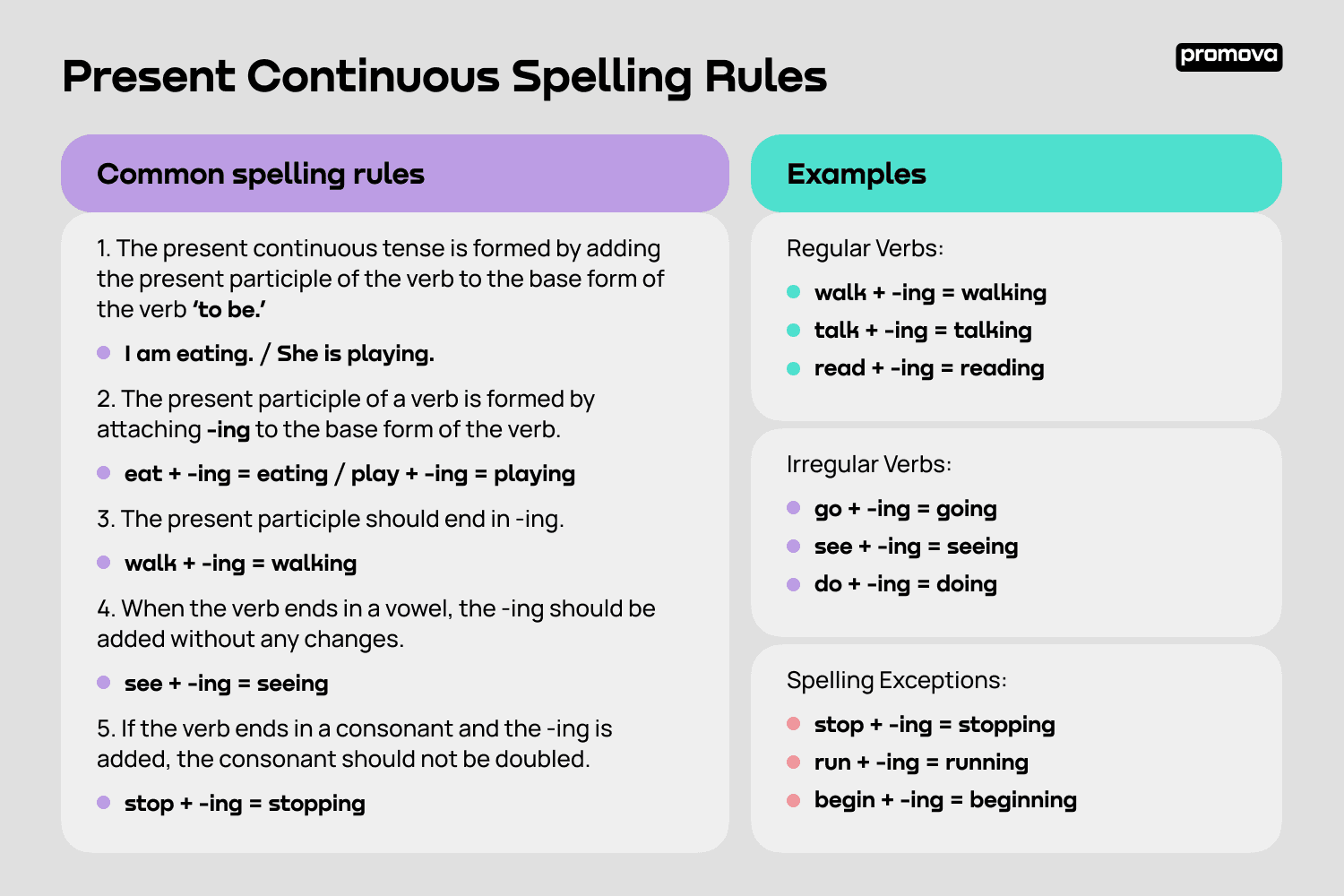Present Continuous Spelling Rules
Contents
Spelling the present continuous tense can be tricky, but with a few basic rules and some practice, you can master it in no time! In this reference, we’ll cover the common spelling rules for the present continuous tense and show you how to correctly spell words in this tense.
We’ll also provide you with some tips and tricks to help you remember the spelling rules and practice exercises so you can gain confidence in your spelling. Let's begin!
Common spelling rules for the present continuous tense
The present continuous tense is used to describe an action that is currently happening or will soon happen. It is formed by adding the present participle of the verb to the base form of the verb ‘to be.’ For example:
I am eating. She is playing.
The present participle of a verb is formed by attaching -ing to the base form of the verb. For example:
eat + -ing = eating play + -ing = playing
When spelling the present continuous tense, there are some common rules that you should follow. The most important rule is that the verb should be spelled correctly. This means that the verb should follow the basic rules of spelling, such as adding -ed to regular verbs in the past tense or changing the spelling of some irregular verbs.
Another important rule is that the present participle should end in -ing. This can be confusing when the verb ends in a consonant, but the -ing should still be added. For example:
walk + -ing = walking
When the verb ends in a vowel, the -ing should be added without any changes. For example:
see + -ing = seeing
The final rule is that the verb should not be double-consonanted. This means that if the verb ends in a consonant and the -ing is added, the consonant should not be doubled. For example:
stop + -ing = stopping
These are the three most important spelling rules to remember when spelling the present continuous tense. Now let’s move on to the spelling chart.
2
Examples of Present Continuous Spelling
To help you gain confidence in your present continuous spelling, let’s look at some examples.
walk + -ing = walking talk + -ing = talking read + -ing = reading
Irregular Verbs:
go + -ing = going see + -ing = seeing do + -ing = doing
Spelling Exceptions:
stop + -ing = stopping run + -ing = running begin + -ing = beginning
These examples should help you understand the spelling rules for the present continuous tense. Now let’s look at some common mistakes. 
Summary
The best way to remember the spelling rules is to practice and break them down into smaller chunks. You can also create mnemonics or rhymes to help you remember this. Finally, consider using Promova to better remember spelling in different tenses. Time to spell continues correctly, now that you know all the rules!



Comments